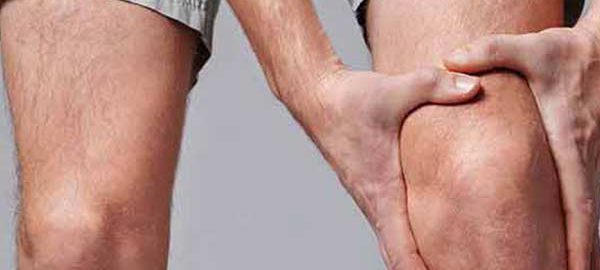The two meniscus can be easily injured by a rotation of the knee during a sustained effort. Partial or total meniscus rupture occurs at an abrupt torsion or thigh rotation, while the foot stays in place (for example, at a sudden turn to hit the tennis ball).
If the rupture is minimal, the meniscus remains connected in the anterior and posterior part of the knee; if the rupture is large, the meniscus may hang from a cartilage filament. The severity of a rupture depends on the location and extent.
Symptoms
In general, pain in the meniscus rupture occurs, especially when the leg is straightened (at the extension of the leg). The pain may be moderate and the patient may continue the activity.
Severe pain occurs when a fragment of the meniscus remains between the femur and tibia. Swelling may occur immediately after injury if the blood vessels are damaged, or a few hours after injury if the joint space is filled with fluid produced in response to inflammation. If the synovial envelope is damaged, it becomes inflamed and produces fluid to protect itself, installing the synovial envelope syndrome.
These changes cause swelling of the knee. Sometimes an untreated injury can become painful after several months or even years later, especially if the knee has been injured a second time. After an injury, the knee may become blocked or weakened. Symptoms of a meniscus lesion may resolve spontaneously, but frequently the symptoms persist and require treatment.
Diagnostic
In addition to the patient’s anamnesis, which describes the onset of pain and swelling, the orthopaedic in Dwarka may perform an x-ray of the affected knee. The examination may include a test in which the doctor flexes the leg, then rotates internally and externally while extending the leg. The pain from this maneuver suggests the meniscus rupture. An imaging magnetic resonance test may be recommended to confirm the diagnosis. Occasionally, the orthopaedic surgeon in Dwarka may use arthroscopy for diagnosis and treatment.
Treatment
If the injury is minimal and the pain and other symptoms disappear, the orthopaedic in Delhi will recommend a program of exercises to strengthen the muscles. Exercises for meniscus disorders are initially performed under the supervision of an orthopaedic in West Delhi or therapist.
The physiotherapist in Dwarka will ensure that the patient performs the exercises correctly and without the risk of a new injury. The following exercises are intended to strengthen the thigh muscles and increase the elasticity:
- warming the joint by walking on a medical bicycle, then stretching and lifting the leg
- extension of the foot from the sitting position (a small weight can be placed on the ankle for this exercise)
- in ventral decubitus, there is performed leg lifting movements
- exercises in the swimming pool, including the rapid walking with water at the chest level, raising each leg to 90 with the back glued to a wall of the pool.
If the rupture is enlarged, the doctor may perform arthroscopy in Delhi or surgery to assess the severity and repair the lesion. The orthopaedic surgeon in Delhi can suture the meniscus in relatively young patients if the lesion is in a well-vascularized area and the ligaments are intact. Most young athletes will be able to perform vigorous sports activities after meniscus repair.
In elderly patients or if the rupture is in a poorly vascularized area, the doctor will resect a small portion of the meniscus to smooth the surface. In some cases, the orthopaedic surgeon in West Delhi will resect the entire meniscus.
However, degenerative rheumatism, such as osteoarthritis, presents a higher risk of development if the meniscus is completely removed. Researchers are investigating a procedure by which the meniscus is replaced with a meniscus from a corpse (allograft). A meniscus graft is fragile and can shrink and break easily. The researchers tried to replace the meniscus with an artificial one, but the procedure was even less successful than the allograft.
The rehabilitation after the surgical repair of the meniscus lasts for several weeks, and the postoperative activity is more restricted than in the case of the total resection of the meniscus.
However, exercises speed up healing. Regardless of the type of surgical operation, rehabilitation includes gait, flexion and extension exercises of the knee, and exercises for strengthening the thigh muscles.
The best results of treatment for a meniscus lesion are obtained in patients without modifications of the articular cartilage and without lesions of the anterior cruciate ligament intact.

